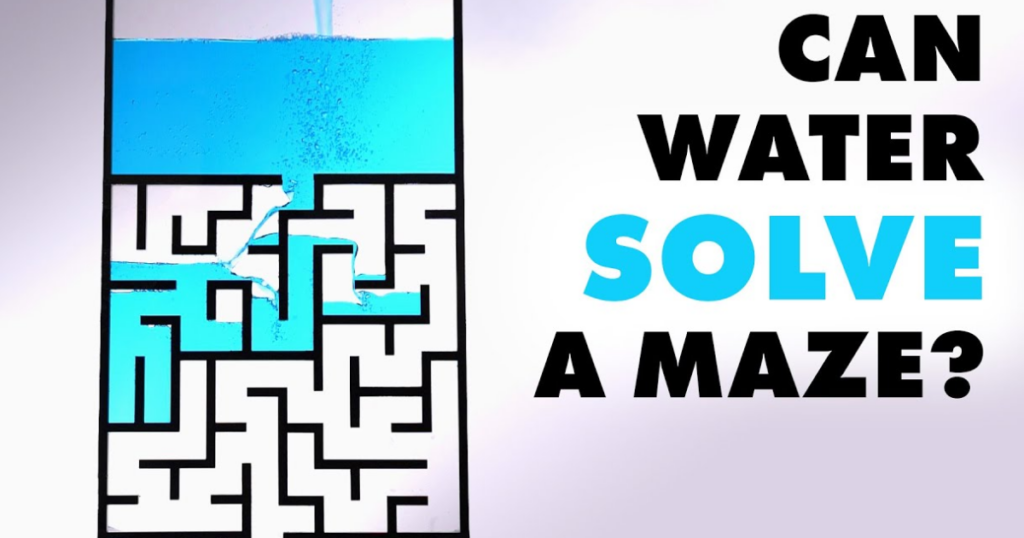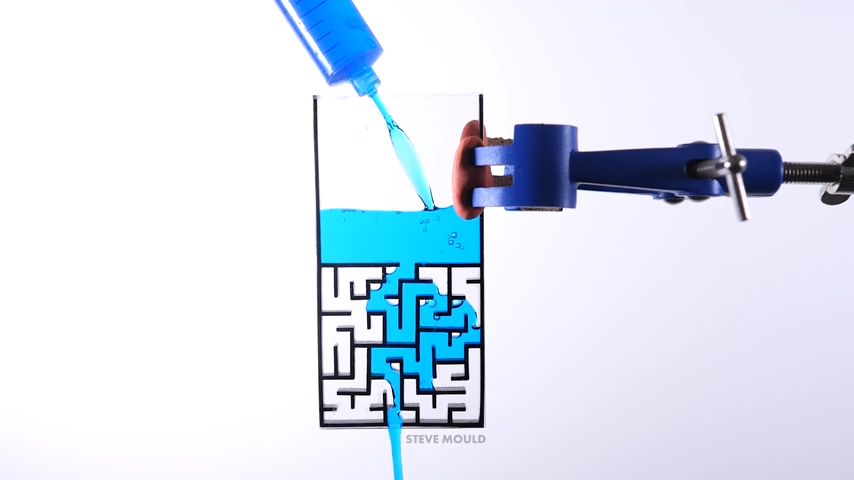
Remember that mind-bending video where water magically solves a maze? YouTuber Steve Mould, ever the science enthusiast, couldn’t resist bringing it to life. He built real mazes, simple and complex, to see if water could truly be a maze master. Spoiler alert: it’s not quite as magical as it seems, but still super cool!
Small Mazes: Water, the Pressure-Powered Pathfinder

First up, the simpler maze. You might be surprised, but the water navigates it flawlessly, avoiding every wrong turn. Why? It’s all about air pressure. When water tries to enter a dead-end path, the trapped air pushes back, effectively blocking its way. It’s like the water has a built-in “air pressure algorithm,” checking all paths simultaneously! Things get interesting, though, because unlike the simulation where water eventually fills everything, here it only solves the correct path.
Big Mazes: Water Switches Strategies, Surface Tension Joins the Game

Scaling things up with bigger mazes reveals the limits of the air pressure strategy. A new force enters the scene: surface tension, the invisible glue holding water molecules together. Without its influence, water explores more paths, following a “lowest point first” approach. This also highlights a limitation of the simulation – it probably doesn’t account for air resistance within the maze itself.
Real World vs. Simulation: Water Writes Its Own Rules
Steve emphasizes how real-world factors like air pressure and surface tension make water behave differently than in simulations. He even ponders recreating the simulation in a vacuum with a special liquid that wouldn’t boil, showcasing his scientific curiosity and love for a good challenge.
The Key Takeaways: Water’s a Master Adapter, Not a Magic Maze Solver
Remember, while water can “solve” mazes in real life, it’s not as simple as the simulations might make it seem. Air pressure and surface tension play crucial roles, and water even adapts its “solving algorithm” based on the maze setup. This experiment beautifully demonstrates the importance of considering real-world physics when interpreting simulations.




